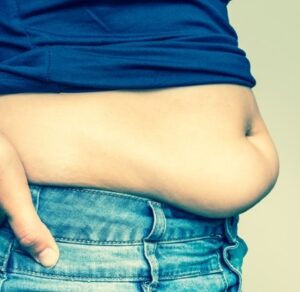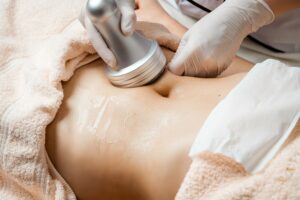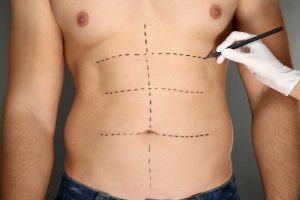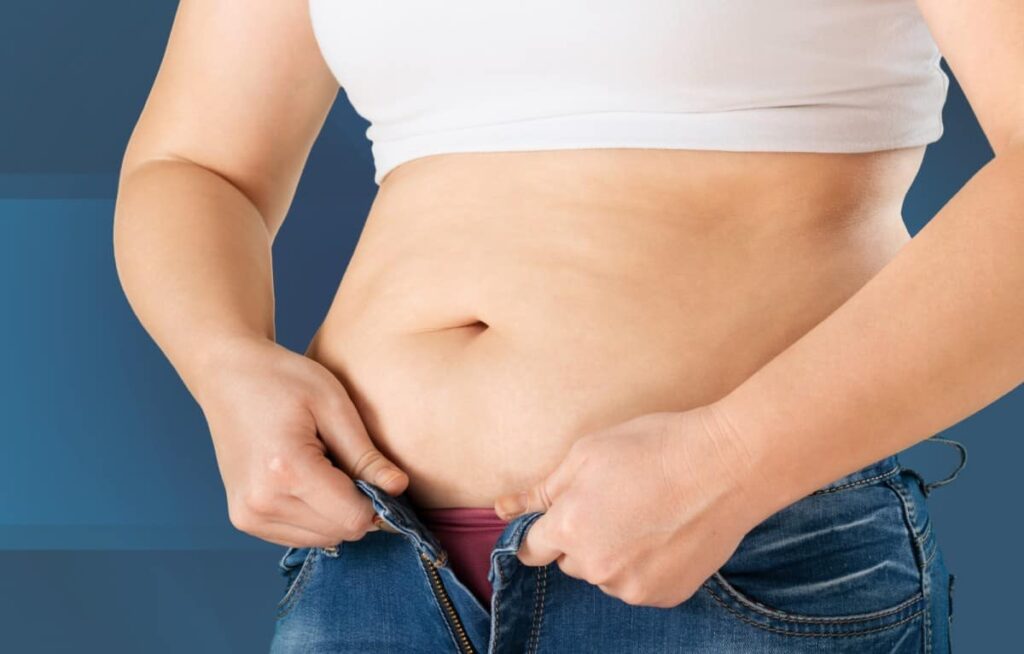Are you struggling with FUPA? Do you want to know how to get rid of it for good? If so, you have come to the right place. In this article, we will discuss everything there is to know about FUPA and how to get rid of it. We will provide tips and advice on diet, exercise, and lifestyle changes that can help you achieve your desired results. So, if you are ready to say goodbye to your FUPA once and for all, keep reading!
Contents
What Is FUPA (Fat Upper Pubic Area)?
 FUPA stands for “fat upper pubic area.” It’s a deposit of fat that can occur above the pubic bone, and it’s more common in women than men. FUPA is often defined as a “pouch” of fat that hangs over the pubic area. It can be caused due to various reasons like:
FUPA stands for “fat upper pubic area.” It’s a deposit of fat that can occur above the pubic bone, and it’s more common in women than men. FUPA is often defined as a “pouch” of fat that hangs over the pubic area. It can be caused due to various reasons like:
- Obesity
- Weight gain during pregnancy
- Genetics
- Aging
FUPA may affect your physical appearance and also cause pain in the lower back and pelvis region. Studies have shown that FUPA can also lead to health problems like:
- Type-II diabetes
- Heart disease
- Stroke
- High blood pressure
Now, let’s get into how you can get rid of FUPA.
Methods To Get Rid Of FUPA
When it comes to getting rid of FUPA, there are a few different methods that you can try. Some people swear by diet and exercise, while others opt for more invasive procedures like liposuction.
If you’re not sure where to start, we’ve put together a comprehensive guide on how to get rid of FUPA. We’ll cover everything from the best exercises to try, to the most effective diet changes you can make.
Some effective methods include:
Diet
The first step to getting rid of FUPA is to watch what you eat. Eating a healthy, balanced diet is essential for weight loss and can help reduce the appearance of FUPA. Some foods that are particularly helpful for weight loss are:
Leafy greens
Leafy greens are low in calories and high in fiber, which makes them great for weight loss. They also contain a variety of vitamins and minerals that are essential for good health. Below are some of the best leafy greens to include in your diet:
- Spinach
- Kale
- Swiss chard
- Collards
- Lettuce
Try to include a serving of leafy greens at every meal. You can add them to smoothies, soups, salads, or simply sauté them and eat them as a side dish.
Fruits
In addition to leafy greens, fruits are also excellent for weight loss. They are low in calories and high in fiber, which helps you feel full after eating. Fruits are also good sources of vitamins and minerals. Some of the best ones to include in your diet are:
- Apples
- Oranges
- Pears
- Berries
- Grapes
- Melon
Make sure to eat a variety of fruits so you can get the most benefit. You can eat them fresh, frozen, or canned. Just make sure to avoid fruit juices, as they are often high in sugar.
Vegetables
 Like fruits, vegetables are low in calories and high in fiber. They also contain a variety of vitamins and minerals that are essential for good health. Some of the best vegetables for weight loss are:
Like fruits, vegetables are low in calories and high in fiber. They also contain a variety of vitamins and minerals that are essential for good health. Some of the best vegetables for weight loss are:
- Broccoli
- Cauliflower
- Brussels sprouts
- Green beans
- Asparagus
Try to include a serving of vegetables at every meal. You can add them to soups, salads, stir-fries, or simply eat them as a side dish.
Lean protein
Lean protein is an essential part of a weight-loss diet. It helps you feel full and satisfied after eating, and it also helps preserve muscle mass as you lose weight. Some good sources of lean protein are:
- Chicken
- Turkey
- Fish
- Eggs
- Beans
- Nuts
- Seeds
Make sure to include a source of lean protein at every meal. You can add chicken or turkey to salads, stir-fries, or soups. Fish is also a great option, and you can try different types to keep things interesting. Eggs make a great breakfast or snack, and beans and nuts are perfect for adding to salads or eating as a snack.
Whole grains
Whole grains are a good source of fiber, which helps you feel full and satisfied after eating. They also contain a variety of vitamins and minerals that are essential for good health. Some of the best whole grains for weight loss are:
- Oats
- Barley
- Brown rice
- Quinoa
- Buckwheat
You can add oats to smoothies, make barley soup, or eat quinoa as a side dish. Also, try to choose whole-grain bread and pasta when possible.
Healthy fats
Despite what you may have heard, not all fats are bad for you. In fact, some fats are essential for good health. These “healthy” fats can help you lose weight by:
- Reducing hunger
- Increasing fullness
- Improving blood sugar control
Some good sources of healthy fats are:
- Avocados
- Nuts and seeds
- Olives and olive oil
- Fish
- Flaxseeds
- Chia seeds
You can add avocado to salads or sandwiches, eat nuts as a snack, or use olive oil in cooking. Fish is also a great source of healthy fats, and you can try different types to keep things interesting. Flaxseeds and chia seeds are perfect for adding to smoothies or yogurt.
Exercise
In addition to eating a healthy diet, exercise is also important for weight loss. It helps burn calories and improve your overall health. Aim for at least 30 minutes of moderate-intensity exercise most days of the week. Some great exercises to try are:
Walking
Walking is a great way to get started with exercise. It’s low-impact and easy to do, and it doesn’t require any special equipment. You can walk around your neighborhood, at a local park, or on a treadmill. Try to walk for at least 30 minutes a day.
Jogging or running
If you’re looking for a more challenging workout, try jogging or running. You can do this outdoors or on a treadmill. Start slowly and build up your speed as you go. Aim for 30 minutes of jogging or running three to four times per week.
Cycling
Cycling is another great exercise for weight loss. It’s low-impact and can be done outdoors or indoors on a stationary bike. Try to cycle for at least 30 minutes a day, five days a week.
Swimming
 Swimming is an excellent workout for your whole body, and it’s also great for weight loss. You can swim laps at a local pool, take a swimming class, or work out at a gym with a pool. Aim for 30 minutes of swimming three to four times per week.
Swimming is an excellent workout for your whole body, and it’s also great for weight loss. You can swim laps at a local pool, take a swimming class, or work out at a gym with a pool. Aim for 30 minutes of swimming three to four times per week.
Pilates
Pilates is a type of exercise that focuses on your core muscles. It’s great for toning your stomach and improving your posture. You can do Pilates at home with an online video or DVD, or you can take a class at a gym or studio. Aim for three to four 30-minute sessions per week.
Yoga
Yoga is another great exercise for toning your body and improving your posture. It can also help reduce stress and improve flexibility. You can do yoga at home with an online video or DVD, or you can take a class at a gym or studio. Aim for three to four 30-minute sessions per week.
No matter what exercise you choose, be sure to start slowly and build up your intensity over time. And remember, you don’t have to go to the gym to get a good workout. There are plenty of exercises you can do at home. Try to find an activity that you enjoy so that it doesn’t feel like a chore. And, if you can, exercise with a friend or family member to make it more enjoyable.
Coolsculpting
Coolsculpting is a non-surgical procedure that uses freezing temperatures to eliminate fat cells. The process is simple: the doctor applies a special device to the area of your body that you want to treat. The device then freezes the fat cells, which are destroyed and removed from your body over time.
Coolsculpting is a great option for those who want to get rid of FUPA without surgery. The procedure is safe and effective, and there is no downtime. You may see results after just one treatment, but most people need multiple treatments to achieve their desired results.
If you’re interested in cool sculpting, be sure to consult with a board-certified dermatologist or plastic surgeon who has experience with the procedure. They will be able to determine if cool sculpting is right for you.
Ultrasound cavitation
 Ultrasound cavitation is one of the most popular non-invasive fat reduction treatments. It uses high-frequency sound waves to break down fat cells, and it has been shown to be effective in reducing abdominal fat. The process involves applying a gel to the treatment area and then using a hand-held device to deliver the sound waves. The device then emits sound waves that break down the fat cells, which are then eliminated from your body. Treatment sessions typically last for 30 minutes, and multiple sessions may be needed to see results.
Ultrasound cavitation is one of the most popular non-invasive fat reduction treatments. It uses high-frequency sound waves to break down fat cells, and it has been shown to be effective in reducing abdominal fat. The process involves applying a gel to the treatment area and then using a hand-held device to deliver the sound waves. The device then emits sound waves that break down the fat cells, which are then eliminated from your body. Treatment sessions typically last for 30 minutes, and multiple sessions may be needed to see results.
If you’re looking for a non-invasive way to get rid of FUPA, ultrasound cavitation may be worth considering. However, it’s important to keep in mind that this treatment is not suitable for everyone, and it’s important to consult with a qualified healthcare provider before proceeding.
Mesotherapy
Mesotherapy is another popular non-invasive fat reduction treatment. It involves injecting a solution of vitamins, minerals, and other nutrients into the mesoderm (the middle layer of the skin). This solution helps to break down fat cells and promote the development of new collagen and elastin fibers. Treatment sessions typically last for 30 minutes, and multiple sessions may be needed to see results.
Mesotherapy is a popular choice for those looking to get rid of FUPA because it is non-invasive, relatively painless, and requires no downtime. However, it is important to note, that mesotherapy is not FDA-approved for fat reduction. Additionally, the long-term effects of this treatment are unknown.
Surgical Methods To Get Rid Of FUPA
Surgical methods are generally reserved for those who have not had success with non-surgical methods. It is important to note that surgical methods come with risks and side effects, and they should only be considered as a last resort.
Tummy tuck
A tummy tuck, also known as an abdominoplasty, is a surgical procedure that involves removing excess skin and fat from the abdomen. The surgeon will also tighten the muscles in the abdominal wall to create a flatter, firmer stomach. A tummy tuck is major surgery, and it typically requires several weeks of recovery time. Additionally, there is a risk of scarring and infection. The procedure involved in this surgery are as follows:
- The surgeon makes an incision in the lower abdomen, just above the pubic area.
- The skin is then lifted up to reveal the underlying muscle and fat.
- Excess skin and fat are removed, and the muscles are tightened.
- The skin is then re-draped over the newly contoured stomach and sutured into place.
A tummy tuck is a major surgery that should only be considered as the last option. It is important to consult with a board-certified plastic surgeon to see if you are a good candidate for this procedure.
Liposuction
 Liposuction is a surgical procedure that involves suctioning out fat from specific areas of the body. It is typically used to contour the stomach, hips, and thighs. The surgeon will make small incisions in the treatment area and insert a thin tube called a cannula. The cannula is then used to suction out the excess fat. Liposuction is a major surgery that requires general anesthesia, and it typically takes several weeks to recover from. Additionally, there is a risk of infection, scarring, and uneven results.
Liposuction is a surgical procedure that involves suctioning out fat from specific areas of the body. It is typically used to contour the stomach, hips, and thighs. The surgeon will make small incisions in the treatment area and insert a thin tube called a cannula. The cannula is then used to suction out the excess fat. Liposuction is a major surgery that requires general anesthesia, and it typically takes several weeks to recover from. Additionally, there is a risk of infection, scarring, and uneven results.
The cost will vary depending on the amount of fat being removed and the geographical location of the surgeon. Most insurance plans do not cover cosmetic surgery procedures such as liposuction.
Liposuction is not a weight loss surgery and should not be used as such. It is meant for people who are at or near their goal weight but have stubborn pockets of fat that they cannot get rid of through diet and exercise alone.
If you’re considering liposuction to get rid of FUPA, make sure to consult with a board-certified plastic surgeon. They will be able to help you determine if you’re a good candidate for the procedure and what you can expect in terms of results and recovery.
Panniculectomy
Panniculectomy is a surgical procedure to remove excess skin and fat from the lower abdomen. The surgery is typically performed for cosmetic reasons, but can also be done to treat health conditions such as back pain or rashes.
Panniculectomy is a major surgery that requires general anesthesia. The surgery usually takes about two hours to complete, and you will likely stay in the hospital for one or two nights. Recovery from panniculectomy can take several weeks, and you may have some scarring.
If you are considering panniculectomy, talk to your doctor about the risks and benefits of the surgery. Panniculectomy is not right for everyone, and it’s important to make sure that you are a good candidate for the surgery before proceeding.
Conclusion
So there you have it, everything you need to know about how to get rid of FUPA. Remember, the best way to achieve lasting results is through a combination of diet and exercise. But even if you can’t commit to a full-fledged workout routine, simply making some lifestyle changes (like eating more protein and fiber) can help reduce belly fat.
If you are pregnant or have recently had a baby, your FUPA may be due to loose skin and stretched abdominal muscles. In this case, exercise and time will eventually tighten your skin and muscles. If you are overweight or obese, losing weight can significantly reduce the appearance of FUPA.
For people who are already at a healthy weight, spot-training exercises (like crunches and planks) can help tone the underlying abdominal muscles.
If you’re struggling with your body image or are unhappy with your appearance, please remember that you are not alone. Seeking professional help from a therapist and dietician can make a world of difference.
For more tips on healthy eating and weight loss, contact Mantra Care. We can help you develop a healthy weight loss plan that is tailored to your specific needs and goals. As always, consult with a registered dietitian or nutritionist if you have any questions or concerns about starting a new diet.


